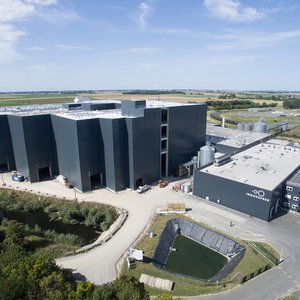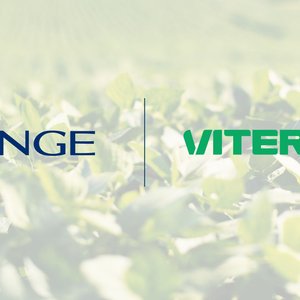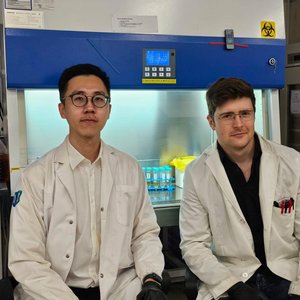A team of researchers from Biomin, led by Rui A. Gonçalves, have published the most recent conclusions of their mycotoxin survey study on plant-based meals and finished feeds in SE Asian aquaculture. The results are published In the latest issue of World Mycotoxin Journal.
The objective of published work was to analyze the risk of mycotoxin contamination in conventional plant ingredients used for aquafeeds (as the research group has done in the past). They also analyzed the by-products of these commodities, which are starting to be used in aquafeeds due to their better price and availability. Particular attention was also given to local non-conventional meals and aquaculture by-products (e.g., shrimp head meals, sun dried fishmeal, etc).
Beside the most common mycotoxins (AF, ZEN, FUM and DON), researchers enlarged their goal to analyze 18 mycotoxins per sample in order to understand the occurrence of masked and alternative metabolites of mycotoxins in these aquaculture feedstuffs. Additionally, finished feeds for fish and shrimp were also analyzed. Due to the increasing globalization of trade, and the incorporation of imported raw materials into aquafeeds, the mycotoxin contamination of locally produced commodities was compared to the same imported commodities.
During the period of one year (January 2016 - December 2016), 175 samples of different plant proteins, aquaculture/fishery by-products and finished aquaculture feeds, were analyzed. Samples were tested for: aflatoxins (AF; AFB1, AFB2, AFG1 and AFG2); zearalenone (ZEA); Type B trichothecenes (deoxynivalenol (DON); Nivalenol (NIV); 3-Acetyldeoxynivalenol (3-AcDON); 15-Acetyldeoxynivalenol (15-AcDON) and fusarenon X-glucoside (FUX)); fumonisins (FB; FB1, FB2 and FB3); Type A trichothecenes (T-2; HT-2; Diacetoxyscirpenol (DAS) and neosolaniol (NEO)) and ochratoxin A (OTA). All samples were sourced in Southeast Asia.
Within the analyzed samples, only 4% were free of detectable mycotoxins. Eight percent of the samples had one mycotoxin and 88% of the samples were contaminated with more than one mycotoxin. The current work show similarity to previous studies, that mycotoxin occurrence in plant-meals, and consequently in finished feeds, is quite variable and confirms that AF is not the main mycotoxin in aquafeeds. Mycotoxin occurrences in fish and shrimp feeds in the present samples were higher than reported in the previous studies for the same region. In samples of shrimp feed with DON detected, the mean average DON level was 882 μg/kg with a maximum level of 2,287 μg/kg. These values are within the reported sensitivity levels of white leg shrimp (Litopenaeus vannamei).
The samples analyzed in the present survey contained FB1 and FB2 which are toxins produced by Fusarium molds, which are generally related to field contamination of crops rather than storage. Interestingly, Fegan and Spring (2007) also reported several marine derived samples from fishmeal and shrimp meal contaminated with mycotoxins produced by Fusarium spp.. It\'s known that Fusarium strains namely F. oxysporum and F. solani, are opportunistic pathogens for fish and shrimp (Hatai et al., 1986; Lightner, 1996; Ostland et al., 1987; Souheil et al., 1999), however, therese fungi strain ability to produce toxins is not known, however this hypothesis cannot be totally rejected. However the authors also believe the possibility for FUM contamination through bioaccumulation.
Fusarium mycotoxins are a broad class of compounds with different chemical structures, physical and toxicological proprieties. Due to this great diversity, different detoxification strategies are required to deal with this complex group of compounds. Adsorption is the most common approach to deal with mycotoxins and many products using this strategy are available on the market. However, as proved by several studies (Veikiru et al. 2015; Hahn et al. 2015; Fruhauf et al. 2011), adsorption is not a feasible strategy to tackle fusarium mycotoxins, as it is only effective towards aflatoxins and, to a lesser extent, ochratoxins. The reason relates to these mycotoxins\' flat chemical structure that allows them to be captured between the layers of bentonite-a popular binder material. Once the mycotoxin enters the binder layers, the electric force generated by the atoms of both compounds tightens the bond. The less flat chemical structure of other mycotoxins like deoxynivalenol (DON) or zearalenone (ZEN) results in less effective adsorption.
Some governmental authorities -particularly the EU Commission- have recognized this issue, which is why only aflatoxin binding claims are allowed in Europe. The state-of-the-art technology for mycotoxin deactivation uses enzymatic deactivation -or biotransformation- that provides a specific, effective and irreversible degradation of mycotoxins.
Read the complete study results.










